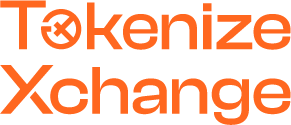Understand Crypto Loan
This month, Tokenize Xchange is bringing to you Crypto Loan Program. So, What is Crypto Loan, and how does it work? Let’s find out with Tokenize Xchange – Digital Currency Trading Platform!

What is Crypto Loan?
Crypto Loan is a program where users can collateralize their crypto assets to borrow more crypto in return.
Users may choose to deposit cryptocurrency from their spot wallet as collateral on Crypto Loan, continuing to earn a yield of up to 5%. Additionally, with 40+ coins available on Crypto Loan, users can select from a variety of different coins to borrow.
Common terms you need to know
- Assets to supply: the token that can be utilized for this program (taken from your tokenize spot wallet)
- Asset to borrow: the tokens that you can loan from this program.
- Liquidation: occurs either the LTV reaches liquidate limit, or your borrowed value reaches the Maximum loan amount
- Margin Call: a notification when your account is nearing the liquidation threshold, sent to you by email to decide: partially cut your loss or deposit more crypto assets into your account to maintain.
- LTV (Loan-to-value): The loan-to-value (LTV) ratio is a measurement for evaluating lending risk. The ratio measures the notional value of a loan against the market value of its collateral (LTV = Loan/market value of the collateral. For instance, a high LTV ratio represents a high financial risk.
- Max loan amount: The max loan amount is the maximum amount that users can borrow from Tokenize Xchange based on your current tier
- Tier Level: There are 4 Tier Levels. As a default, all users will begin at Tier 1 and will be upgraded/downgraded according to previous liquidation occurrences.
- I.e. The Tier Level will be upgraded if liquidation does not occur 2 months after the first borrow
- The Tier Level will be downgraded if liquidation occurs on the current tier. (for users not at Tier 1)

Understand the basis of the Crypto Loan Program
To put it simply, you may think of the collateral as the security the exchange needs to loan you more money so you can expand your trading.
Let’s take a look at this example:
You are currently on tier 1.
Consider that you collateralize $10,000 of tokens to borrow $4,000 worth of BTC from Tokenize Xchange.
The supply in this scenario is $10,000 you deposit. After getting the loan, you sell it for $4,000. By doing so, you expect the price of BTC will decrease by 25% so you can buy back BTC to repay the loan and earn $1000.
The initial LTV would equal: (4,000 / 10,000) *100% = 40%
Below is the LTV ratio for 3 levels: Initial, Margin Call, and Liquidation.

However, due to market movements, the value of BTC increases by 25%.
– LTV = $5,000 / $10,000 *100% = 50%
– In this case, LTV reached 50%, and you would receive a margin call from Tokenize Xchange.
– If the user decided to increase collateral and repay partial of his borrows and the new/adjusted LTV dropped to less than 40%/ initial LTV, the user would avoid liquidation
– In contrast, if you take no action, and the BTC price keeps going up until it reaches the liquidation LTV (60%), it triggers a forced liquidation on the user’s collateralized assets. After this, a liquidation call notification via email and SMS will be sent out to notify users.
>>>Click HERE for more details about the Crypto Loan program
How to join Crypto Loan on Tokenize Xchange?
To join the Crypto Loan program and enjoy flexible loan periods, users must sign in to their Tokenize Xchange account and click HERE.
*Kindly note that the Crypto Loan program is available for Premium or Platinum members only.
You are not a Premium or Platinum member yet? No worry! Upgrade your membership right away to experience more promotions and special offers from Tokenize Xchange!
Disclaimer
Cryptocurrencies are subjected to high market risk and volatility despite high growth potential. Users are strongly advised to do their research and invest at their own risk.


